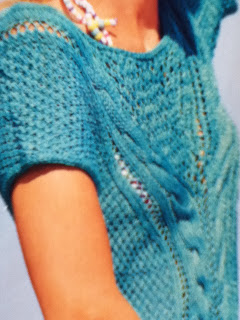Considering Bamboo
Bamboo knitting yarn is a relatively
new entry in the knitting world, but it has become quite popular very quickly,
and with good reason. Bamboo is a beautiful natural fiber that wears well and
is often considered naturally antibacterial.
Bamboo is a grass that is harvested
and distilled into cellulose that is then spun into the yarn.
Positive
Things About Bamboo Yarn
- Bamboo is a renewable resource. Bamboo can be harvested
without killing the plant, and it only takes a few months before the plant
is ready to be harvested again. That makes it an environmentally friendly
choice.
- Bamboo yarn, when not mixed with unnatural fibers, is
biodegradable.
- Bamboo yarn is often dyed with more natural dyes that
are safer for the environment.
- Bamboo fabric is naturally antibacterial.
- Bamboo also has ultra-violet protective properties.
- Fabric knitted with bamboo is quite breathable and cool
and has great drape.
- Bamboo has a good luster, similar to mercerized cotton.
- Bamboo is strong, flexible, and can be softer than silk
when spun into yarn.
Potential
Bamboo Negatives
- Bamboo yarn loses strength when it is wet and swells
considerably in water.
- The yarn may not be very cohesive. Some brands split
much more than others.
- Bamboo needs to be hand-washed, so it isn't a great
choice for things that need to be washed frequently.
Tips
for Working with Bamboo Yarn
- If the antibacterial property is something you are
looking for, stick with a 100 percent bamboo yarn or choose one that has
at least 70 percent bamboo for best results.
- Use blunt-ended needles to cut down on the splitting
(perhaps bamboo needles?).
- Knit slowly at first to avoid splitting.
- If you're looking for strength in the fabric but are
using a fine bamboo yarn, try knitting with two strands held together.

This jacket with long scarf showcases Bamboo's glorious sheen and strength.
This outfit is modern and consists of a wonderful sweater with separate cowl. Bamboo adds the shine and gives a perfect weight for the fabric.
Potential Bamboo Negatives
Tips for Working with Bamboo Yarn






